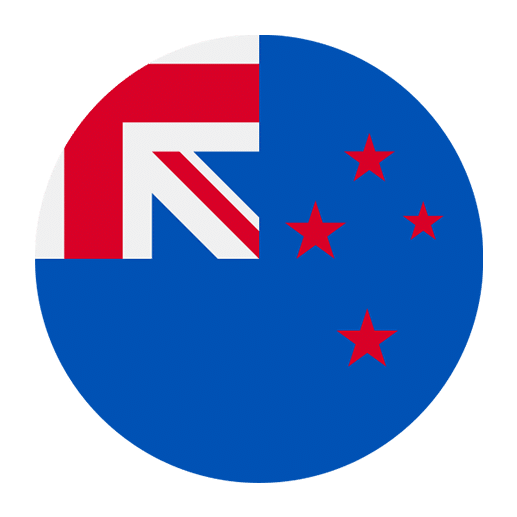In the rich tapestry of New Zealand’s cultural heritage, the Māori language, or te reo Māori, holds a significant place. It is not merely a means of communication; it is a cornerstone of Māori identity and culture. In recent decades, there has been a growing recognition of the importance of preserving and revitalizing this indigenous language. This article delves into the legal framework established to protect and promote the Māori language, offering insights into its history, the key legislation involved, and the ongoing efforts to ensure its vitality.
Historical Context of Māori Language Suppression and Revival
The history of te reo Māori is one marked by both resilience and adversity. Prior to European colonization, te reo Māori was the dominant language spoken across Aotearoa (New Zealand). The arrival of European settlers in the early 19th century brought significant changes, including the introduction of English as the dominant language of administration, education, and commerce. This shift led to a gradual erosion of te reo Māori, particularly as policies and practices were implemented that discouraged or outright banned its use in schools and public life.
By the mid-20th century, the effects of these policies were starkly evident, with the number of fluent Māori speakers dwindling. This decline spurred a cultural renaissance among Māori communities, leading to grassroots movements aimed at revitalizing te reo Māori. These efforts culminated in a series of legal and policy changes designed to protect and promote the language.
The Māori Language Act 1987
A pivotal moment in the legal protection of te reo Māori came with the enactment of the Māori Language Act 1987. This groundbreaking legislation was a direct response to the growing demand for the recognition and preservation of the Māori language. The Act achieved several key objectives:
Recognition as an Official Language
The Māori Language Act 1987 officially recognized te reo Māori as an official language of New Zealand. This was a monumental step, as it affirmed the language’s status and acknowledged its importance to New Zealand’s cultural and national identity.
Establishment of the Māori Language Commission
The Act also established Te Taura Whiri i te Reo Māori, the Māori Language Commission. The Commission’s mandate includes promoting the use of te reo Māori, providing advice on language policy, and supporting initiatives aimed at language revitalization. By creating an institution dedicated to these goals, the Act provided a structured approach to language preservation.
Legal Use of Māori in Court
Another significant provision of the Māori Language Act 1987 was the recognition of the right to speak Māori in legal proceedings. This was a crucial acknowledgment of the language’s role in the justice system and ensured that Māori speakers could use their native tongue in courts of law.
The Waitangi Tribunal and Language Claims
The Waitangi Tribunal, established in 1975, plays a crucial role in addressing grievances related to the Treaty of Waitangi, the foundational document signed in 1840 between Māori chiefs and the British Crown. Among the many claims brought before the Tribunal, several have focused on the protection and promotion of te reo Māori.
The Wai 11 Claim
One of the most significant language-related claims was Wai 11, filed in 1985 by Huirangi Waikerepuru and Nga Kaiwhakapumau i te Reo (the Wellington Māori Language Board). The claim argued that the Crown had failed to protect te reo Māori as guaranteed under the Treaty of Waitangi. The Tribunal’s findings in favor of the claimants were instrumental in shaping subsequent language policies, including the Māori Language Act 1987.
Ongoing Tribunal Work
The Waitangi Tribunal continues to address language-related grievances, examining whether the Crown is meeting its Treaty obligations to protect and promote te reo Māori. These ongoing efforts highlight the dynamic nature of language protection and the need for continual assessment and improvement.
The Māori Language Act 2016
Building on the foundations laid by the 1987 Act, the Māori Language Act 2016 introduced several important changes and enhancements to the legal framework for language protection. The 2016 Act was a response to evolving needs and aimed to further strengthen the support for te reo Māori.
Establishment of Te Mātāwai
One of the key features of the Māori Language Act 2016 was the establishment of Te Mātāwai, an independent statutory entity. Te Mātāwai’s role is to provide leadership and oversight of Māori language revitalization efforts, with a particular focus on community-led initiatives. This approach recognizes that sustainable language revitalization must be driven by Māori communities themselves.
Co-Governance Model
The Act also introduced a co-governance model, ensuring that both the Crown and Māori have a say in language policy and planning. This collaborative approach aims to balance the responsibilities and aspirations of the government and Māori communities in promoting te reo Māori.
Language Planning and Strategy
The Māori Language Act 2016 emphasizes the importance of strategic language planning. It mandates the development of a Maihi Karauna (Crown Māori Language Strategy) and a Maihi Māori (Māori-led Language Strategy). These complementary strategies are designed to work together to achieve the overarching goal of language revitalization.
Educational Initiatives and Language Revitalization
Education is a critical arena for language protection and revitalization. Recognizing this, various initiatives and programs have been developed to support the learning and use of te reo Māori in educational settings.
Kōhanga Reo
Kōhanga Reo, or Māori language preschools, play a vital role in early childhood language acquisition. Established in the early 1980s, these immersion programs provide a nurturing environment where young children can learn te reo Māori as their first language. Kōhanga Reo has been instrumental in producing a new generation of fluent Māori speakers.
Kura Kaupapa Māori
Building on the success of Kōhanga Reo, Kura Kaupapa Māori schools offer primary and secondary education with te reo Māori as the medium of instruction. These schools follow the Te Aho Matua philosophy, which emphasizes Māori values, language, and culture. Kura Kaupapa Māori has been a cornerstone of Māori language education, providing a pathway for students to continue their language learning journey.
Whare Wānanga
At the tertiary level, Whare Wānanga (Māori tertiary institutions) offer higher education programs that prioritize Māori knowledge, language, and research. These institutions provide opportunities for advanced language study and contribute to the academic and cultural development of te reo Māori.
Media and Technology in Language Promotion
The role of media and technology in language promotion cannot be overstated. In an increasingly digital world, these tools offer innovative ways to engage with and promote te reo Māori.
Māori Television
Launched in 2004, Māori Television has been a significant platform for promoting te reo Māori and Māori culture. The channel broadcasts a wide range of content, including news, entertainment, and educational programs, all with a focus on te reo Māori. This has helped to normalize the use of the language in everyday life and reach a broader audience.
Digital Resources and Apps
The advent of digital technology has led to the development of numerous online resources and mobile apps designed to support language learning. Platforms such as Te Aka Māori Dictionary, language learning apps like Kupu, and online courses provide accessible and interactive ways for people to learn and practice te reo Māori.
Challenges and Future Directions
Despite the significant progress made in the protection and promotion of te reo Māori, several challenges remain. Addressing these challenges is crucial to ensuring the continued vitality of the language.
Intergenerational Transmission
One of the key challenges is ensuring the intergenerational transmission of te reo Māori. While educational initiatives have been successful in teaching the language to younger generations, it is essential that these efforts are supported by the use of te reo Māori in homes and communities.
Resource Allocation
Adequate resourcing is another critical issue. Ensuring that language programs, schools, and initiatives have sufficient funding and support is essential for their sustainability and effectiveness. This includes investment in teacher training, curriculum development, and community-based language projects.
Societal Attitudes
Changing societal attitudes towards te reo Māori is an ongoing challenge. While there has been a significant shift towards greater acceptance and appreciation of the language, there is still work to be done to combat prejudice and promote the value of te reo Māori as an integral part of New Zealand’s identity.
Globalization and Language Shift
In a globalized world, language shift is a common phenomenon, with dominant languages often overshadowing minority languages. Ensuring that te reo Māori remains a living, vibrant language in the face of such pressures requires a concerted effort from all sectors of society.
Conclusion
The legal framework for Māori language protection in New Zealand is a testament to the resilience and determination of Māori communities and their allies. From the landmark Māori Language Act 1987 to the more recent Māori Language Act 2016, significant strides have been made in recognizing and promoting te reo Māori. Educational initiatives, media platforms, and digital resources have all played vital roles in revitalizing the language.
However, the journey is far from over. Continued efforts are needed to address the challenges of intergenerational transmission, resource allocation, societal attitudes, and globalization. By working together, Māori communities, the government, and society at large can ensure that te reo Māori not only survives but thrives, enriching the cultural fabric of Aotearoa for generations to come.
In understanding the legal framework for Māori language protection, we gain insight into the broader efforts to preserve and celebrate the cultural heritage of New Zealand. The story of te reo Māori is one of resilience, revival, and hope—a story that continues to unfold with each new generation of speakers.

